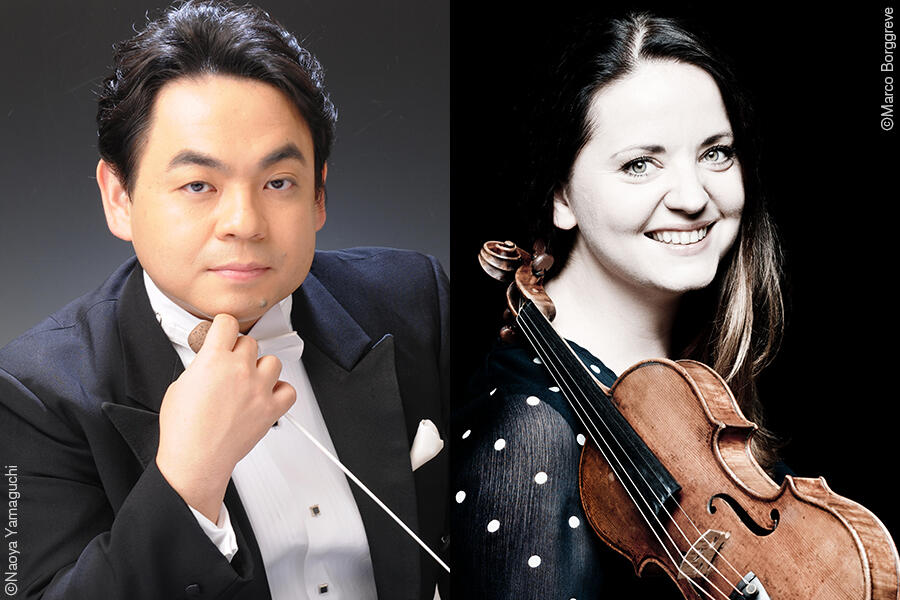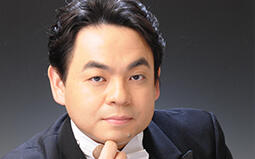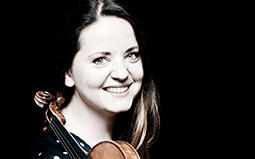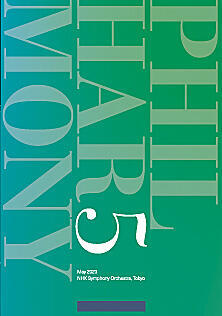- Home
- Concerts
- Subscription Concerts 2022-2023
- Program A
- No. 1983 Subscription (Program A)
No. 1983 Subscription (Program A)
NHK Hall
Google Map Seating Chart

Program
Rakhmaninov / Songs Op. 34 – The Raising of Lazarus (arr. Shimono), Vocalise
The Russian composer Rakhmaninov, also a world-class pianist, left us masterpieces for his instrument. Alongside them, he wrote quite a number of songs for voice and piano of timeless beauty all of which were born before 1917 when he left for good his motherland caught up by the Revolutionary storm.
Vocalise Op. 34-14 for soprano (or tenor) and piano is his best-known song for its plaintive tune and mesmeric aura. Composed in 1915 to be added to Op. 34 (described later), the song has no words. A vocalise is an exercise without lyrics for singers to use only vowel(s) or syllable(s), but Rakhmaninov took advantage of the wordlessness to attain an utmost emotional eloquence. Following the successful premiere, he arranged it for voice and orchestra as well as for orchestra alone.
Op. 34, originally a series of thirteen songs for soprano (or tenor) and piano, was completed in 1912. The sixth of the set, The Raising of Lazarus is a setting of a poem by the Russian theologian and poet Aleksey Khomyakov (1804–1860). In the Bible, Christ brings his friend Lazarus to life, which is often interpreted as an omen of the Resurrection. The song praises this miracle, but also the Redemption and the glorious revival of Christ. The orchestral version performed today was prepared by the conductor Tatsuya Shimono himself who is well versed in Rakhmaninov’s scoring techniques.
[Kumiko Nishi]
Gubaidulina / Offertorium*
One of the greatest figures of modern music, Gubaidulina was born in the Tatar region under the Soviet Union and studied composition in Moscow. A notable event of her activities after graduation is the co-foundation in the mid-1970s of the ensemble "Astreja" whose concern was improvising with folk instruments. Many of her orchestral works are indeed marked by extended (unconventional) techniques, unique instrumental combinations or/and choice of rare instruments. Another important aspect of her music is the spiritualness derived from her
Orthodox beliefs.
Offertorium is a violin concerto written at the request of the violinist Gidon Kremer who first performed it in 1981 in Vienna. This brought an immediate response from the West, leading to her reputation outside the USSR. After the Perestroika, she would move to West Germany.
Offertorium can be considered a three-part concerto performed seamlessly. The title suggests a section of Mass sung when bread and wine are "offered" to remember Christ's death and resurrection, while the work is about sacrifice and offering in a broad sense, both religious and non-religious. The first part is a series of variations on the "theme of king" on which J. S. Bach (1685–1750) composed his Musical Offering (1747). At the opening, Gubaidulina has each note of the theme played by a different instrument, following the Klangfarbenmelodie (sound-color melody) technique that Anton Webern (1883–1945) used when he orchestrated a ricercare from The Musical Offering in 1935. Symbolically, Gubaidulina leaves the last note (here D) of the theme out. The theme gradually shortens — "offering" notes like the atoning sacrifice — every time a new variation begins until there remains only the central two notes. The middle part treats the theme's fragments freely, then timpani and tam-tam (gong) announce the final, chorale-like part. Harps and piano restore gradually, note by note, the theme in retrograde. The solo violin finally pronounces the entire theme, still backward, at the cadenza (without orchestra) to reach the high D note which is prolonged till the end as if alluding to the Resurrection.
[Kumiko Nishi]
Dvořák / Symphony No. 7 D Minor Op. 70
In the late 1870s, Johannes Brahms (1833–1897) recommended his publisher Simrock issuing works by a young, obscure yet promising composer. It would help this lucky Czech man no other than Dvořák to be quickly known both on the European Continent and in the UK.
Dvořák hence first-crossed the Channel in 1884. He conducted his own works in London creating a great sensation, so the local Royal Philharmonic Society, known for commissioning Beethoven's Ninth Symphony, requested Dvořák to compose a new symphony. It was apropos, as he had been deeply impressed by Brahms' latest Symphony No. 3 (1883) and committed himself to writing a work on a par with it. Shortly in 1885, Dvořák's Seventh was completed and premiered in London. The acclaim it immediately won in Europe ensured his solid position as an internationally established composer.
The Seventh might surprise the listener by its overall Austro-Germanic sternness and tenseness presented by the composer who is celebrated for his folklore-inspired sunny, melodious writing. Also, the symphony clearly reflects the rising Czech nationalism of the
period. The outer movements are in sonata form. They are in D minor, the key of Brahms' Tragic Overture (1880) and Beethoven's Ninth (1824), but the finale concludes majestically in D major like, again, Beethoven's Ninth. The first movement opens with the gloomy first theme on violas and cellos, then Dvořák quotes the melodies, one militant and the other lyrical, from his patriotic Hussite Overture (1883). (Hussites are the followers of the Czech theologian Jan Hus, a precursor of Protestant Reformers, who was executed for heresy in 1415 and later became a national hero.) The second movement is in A–B–A form. The central B section's longing theme revealed by horn is as appealing as the famed English horn tune of his Symphony From the New World. The most typical of Dvořák among the four movements is the folkish third. This Scherzo's rhythmically vivacious main section is a stylized furiant, a Czech rapid dance.
[Kumiko Nishi]
Artists
 ConductorTatsuya Shimono
ConductorTatsuya Shimono
Born in 1969, Tatsuya Shimono studied conducting at the Toho Gakuen School of Music, obtained a diploma in conducting at the Chigiana Musical Academy in Siena, Italy, and further studied at the University of Music and Performing Arts Vienna. After winning the Tokyo International Music Competition for Conducting in 2000, and the 1st prize at the Besançon International Competition in the following year, he garnered the world's attention and launched his career conducting orchestras at home and abroad. He has served as Resident Conductor and Principal Guest Conductor of the Yomiuri Nippon Symphony Orchestra, Music Director of the Hiroshima Wind Orchestra, and Permanent Guest Conductor and Principal Guest Conductor of the City of Kyoto Symphony Orchestra, and since 2017, he has been greatly contributing to the further development of the Hiroshima Symphony Orchestra as its Music Director. He first worked with the NHK Symphony Orchestra
in 2005, and since then, has conducted on many occasions including its subscription series.
[Motoyuki Teranishi, music critic]
 ViolinBaiba Skride*
ViolinBaiba Skride*
Baiba Skride was born to a musical family in Latvia and studied music in Riga and at the Conservatory of Music and Theatre in Rostock. In 2001, she won the 1st prize at the Queen Elisabeth Competition for violin. She has performed as a soloist with renowned orchestras such as the Berliner Philharmoniker, the Royal Concertgebouw Orchestra, the Boston Symphony Orchestra, and the Chicago Symphony Orchestra. The emotional performance of Shostakovich’s 1st Violin Concerto with the Gewandhausorchester Leipzig on its Japan tour in 2019 is still vivid in our memory. She has made numerous recordings of concertos by Mozart, Schumann, Brahms, Tchaikovsky, Stravinsky, Janáček, Szymanowski, Sibelius, Nielsen, Bartók and Korngold while actively working on the compositions of Sofia Gubaidulina in recent years, and with the Gewandhausorchester Leipzig, she performed both her Triple Concerto to open the orchestra’s new season in September 2021, and Offertorium to celebrate the composer’s 90th birthday in November in the same year. In the following month, she played her 3rd Violin Concerto Dialogue: I and You with the hr-Sinfonieorchester. She has worked with the NHK Symphony Orchestra back in 2012 and 2018, but this is her first appearance in its subscription concerts.
[Haruo Yamada, music critic]
Download
Ticket
Program A
No. 1983 Subscription (Program A)
NHK Hall
Google Map
Seating Chart
Single Tickets Release Date
Pre-sales for Subscribers:Wednesday, March 1, 2023
*about subscribers
Sale to General Public:Sunday, March 5, 2023
Price
| S | A | B | C | D | E | |
|---|---|---|---|---|---|---|
| Ordinary Ticket | 8,900 | 7,400 | 5,800 | 4,700 | 3,700 | 2,000 |
| Youth Ticket | 4,000 | 3,500 | 2,800 | 2,100 | 1,500 | 1,000 |
Seating chart Enlarge Print PDF
*tax included
*About Youth tickets (Available at N-Kyo Guide)
*Subscribers receive a 10% discount (Available at NHKSO WEB Ticket and N-Kyo Guide)
*For wheelchair-accessible seats, please refer to the N-Kyo Guide
Starting Dates of Ticket Sales
ANNUAL SUBSCRIPTION TICKETS Mon., July 18, 2022 11:00am
[For Subscribers: Thu., July 14, 2022 11:00am]
SEASONAL SUBSCRIPTION TICKETS (SPRING) Fri., Feb. 17, 2023 11:00am
[For Subscribers: Thu., Feb. 14, 2023 11:00am]
Youth Tickets
Youth Tickets are great options for those of 25 years old and younger
WEB Select 3 Plus
Choose three or more of your favorite concerts and get a discount on single tickets
*Only available at NHKSO WEB Ticket NHKSO WEB Ticket (Accesible from Japan only)
For further information and subscription application
N-Kyo Guide TEL:0570-02-9502
Other Ticket Agents
Broadcast
 NHK Educational TVClassical Concert Hall
NHK Educational TVClassical Concert Hall
No. 1983 Subscription (Program A)
Sunday, Jul 2, 2023 9:00PM - 11:00PM
Program:
Rakhmaninov / Songs Op. 34 – The Raising of Lazarus (arr. Shimono), Vocalise
Gubaidulina / Offertorium*
Dvořák / Symphony No. 7 D Minor Op. 70
Conductor:Tatsuya Shimono
Violin:Baiba Skride*
Recorded:May 13, 2023 NHK Hall
To watch a concert,
(accessible only from inside Japan)
(accessible only from inside Japan)


